Last updated: August 23, 2022
Article
Western Arctic Parklands/Kotzebue Weather Summary Fall 2021, Winter 2021-2022, and Spring 2022

NPS/Pam Sousanes
We monitor and record weather data in the Western Arctic Parklands to help understand daily, monthly, and seasonal weather patterns and shifting climate averages that influence the health and abundance of the plants and animals that live in the park and the hydrologic systems that support them. We also track the weather extremes that cause disturbance such as drought, floods, heat waves, cold snaps, and high winds. The data are collected and analyzed along with other park ‘vital signs’ to provide a holistic view of how these high latitude park lands are changing.
The weather station in Kotzebue has been recording temperature and precipitation data for over seventy years. We use that information to provide context for the changes we are seeing today inside the park.
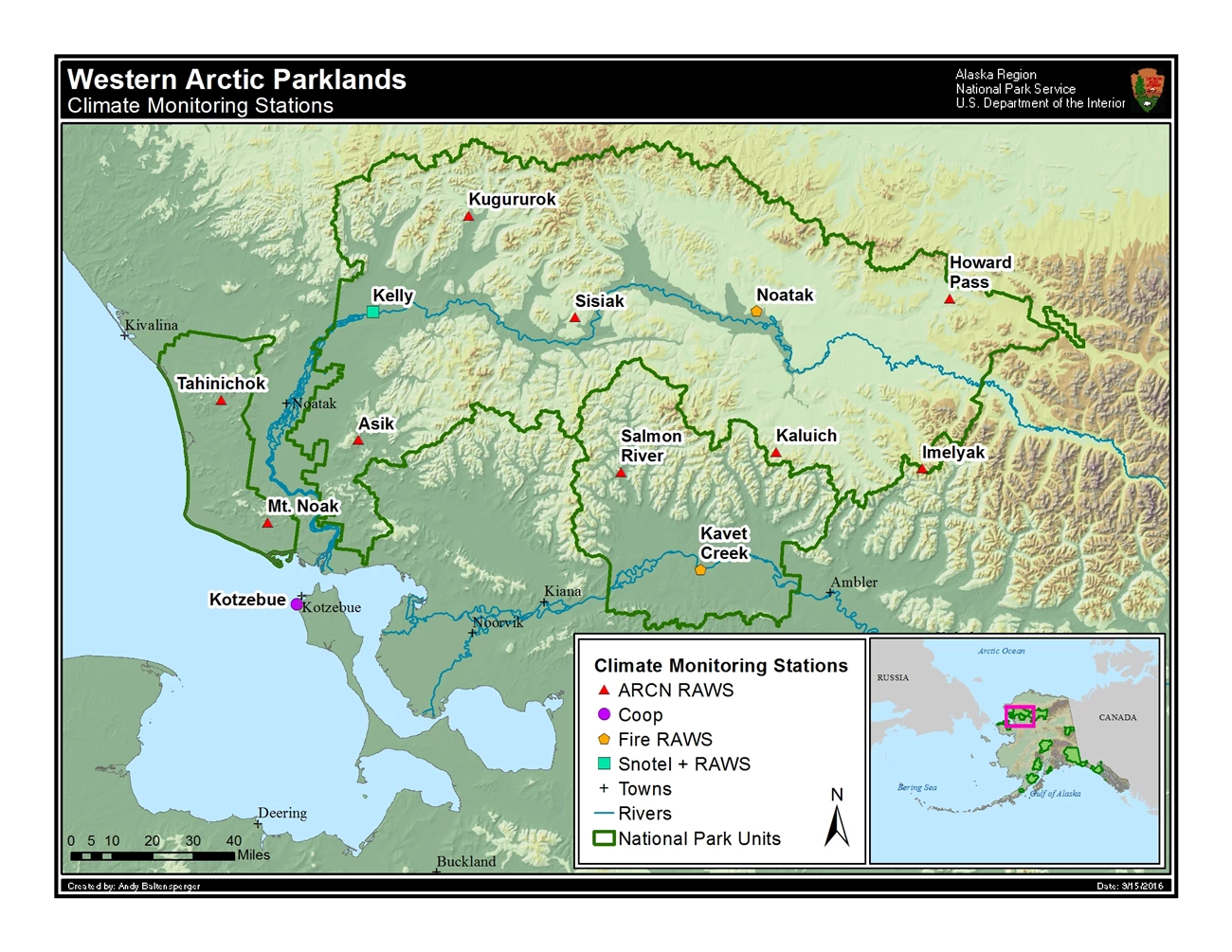
Fall of 2021 was cool in Kotzebue and the total precipitation was slightly below normal
The average temperature for the fall season was 6.1°F cooler than normal. November was by far the coldest of the autumn months coming in almost 15°F colder than normal (Fig. 1). It was the 4th coldest November on record with >100 years of observations. November 2021 was the coldest November to date at the Asik station in Noatak above the Agashashok River. We started recording the temperature at this site in 2012. Last November the average temperature there was 17.4°F and this past fall it was 6.8°F! It was the second coldest November at the Tahinichok site west of Noatak in Cape Kusenstern with a similar record. It was a dry fall season with each month coming in below normal. Not much precipitation fell during the cold month of November (Table 1).
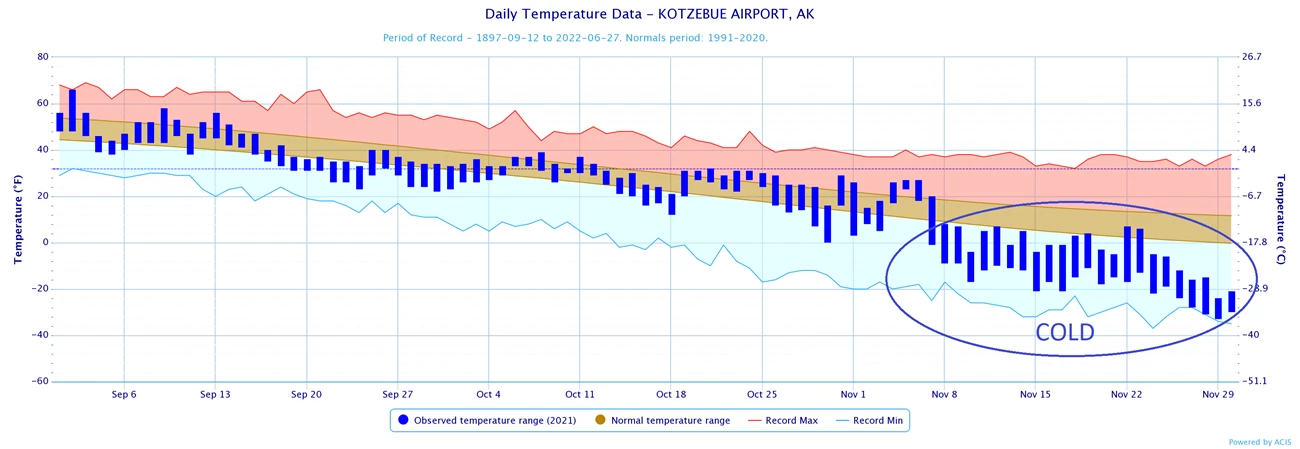

The winter of 2021/2022 was cool and wet
December brought extreme precipitation and rain-on-snow along the West Coast of Alaska and into Interior Alaska. Heavy snowfall, freezing rain, and rain brought record amounts of precipitation to many communities. Kotzebue had its wettest December on record! 2.52 inches of precipitation was recorded in December (melted snow, sleet, rain), which is 345% of normal. Temperatures after mid-month climbed above freezing and the precipitation that fell was likely a combination of sleet and snow. There were several very wet days in December. The wettest day was December 29 when 0.47 inches of precipitation was recorded. Between December 26th and 29th, an atmospheric river originating in the tropical Pacific brought an incredible 1.09 inches of precipitation to the Kotzebue area in the span of just a few days. The normal total for the entire month of December is 0.73 inches. This plume of moisture impacted most of the communities along the west coast of Alaska into the central Interior of the state north of the Alaska Range. Farther north in the Arctic parks temperatures warmed to near 30°F during the warm December events, but because they stayed below freezing it is likely the precipitation fell as snow rather than rain. At the Kelly Ranger Station, the snow depth increased by 14 inches between December 19 and 27. Photos from the Salmon River station in Kobuk Valley National Park also capture the snow accumulation during the late December (Fig. 2). Precipitation for the remainder of the winter was below normal, but the winter precipitation still ended up well above normal with a seasonal total of 3.62 inches.
Winter temperatures for 2021-2022 continued the cooler than normal trend with the persistence of a La Niña into a second winter season. La Niña, in general, means cooler temps for Alaska (Fig. 3). Even with a few warm storm events, December was cooler than normal. Each month of the winter season had cooler than normal winter temperatures. December temperatures were just below normal, while January was the chilly winter month, almost 11 degrees F cooler than normal. Temperatures stayed on the cool side through February and ended up 8.2°F cooler than normal for the month (Table 2). A few warm periods occurred in late December and late February. A new record high of 35°F was observed on December 19 (Fig. 4). Overall, the average winter temperature for the 2021-2022 season was 7°F cooler than normal.
Figure 2. Snow Accumulation at the Salmon River climate station in Kobuk Valley National Park
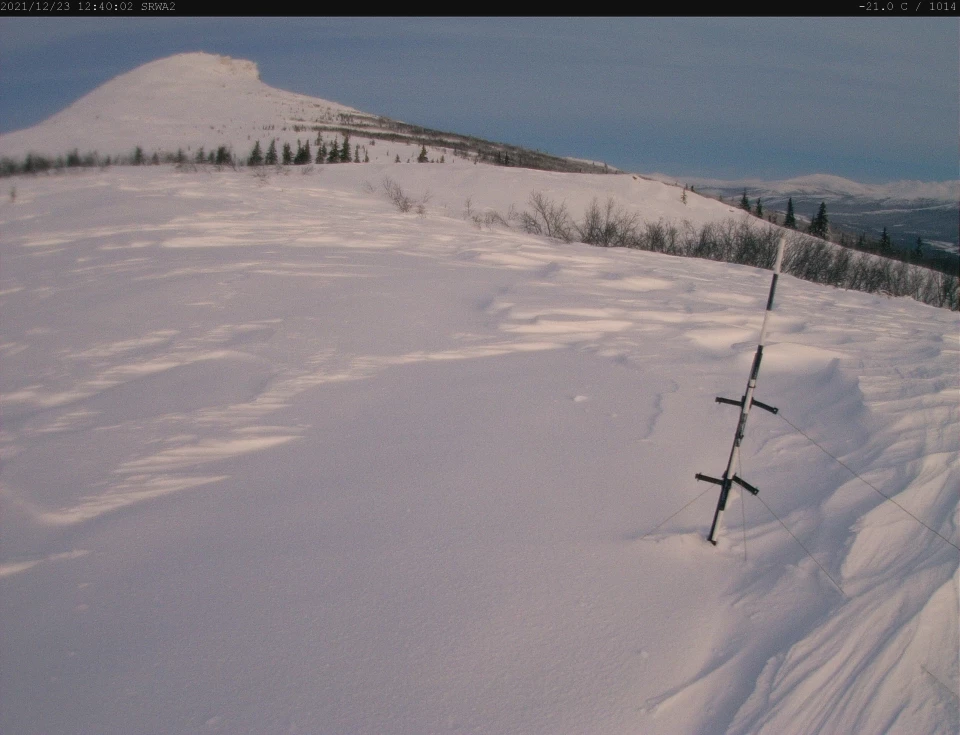
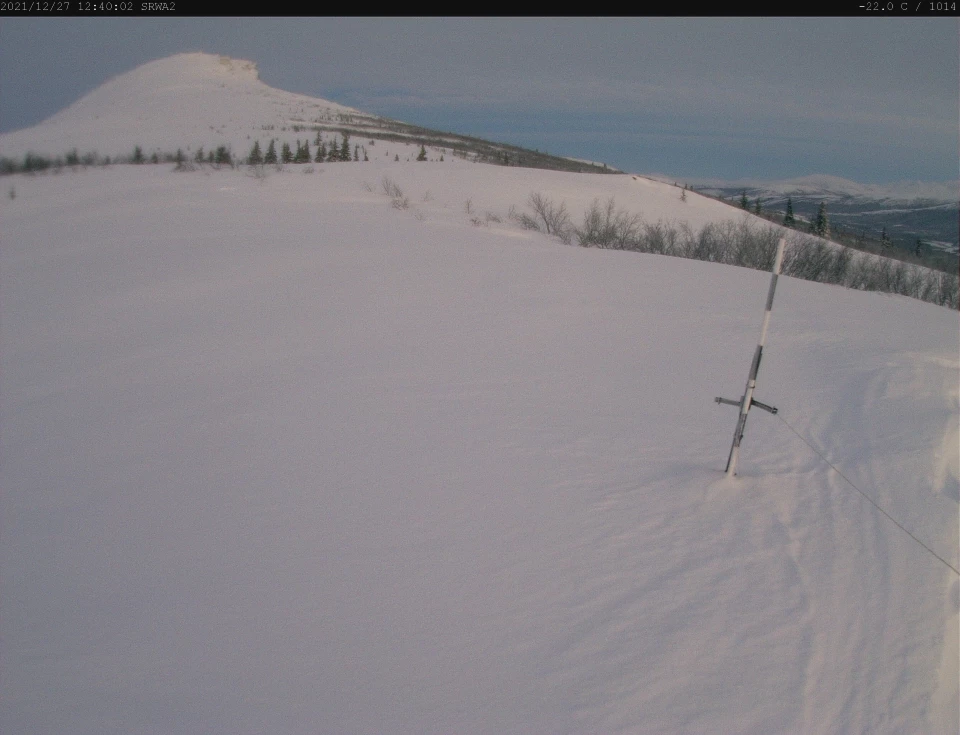
Left image
December 23
Credit: NPS/Salmon River Climate Station. Kobuk Valley NP
Right image
December 27
Credit: NPS/Salmon River Climate Station. Kobuk Valley NP
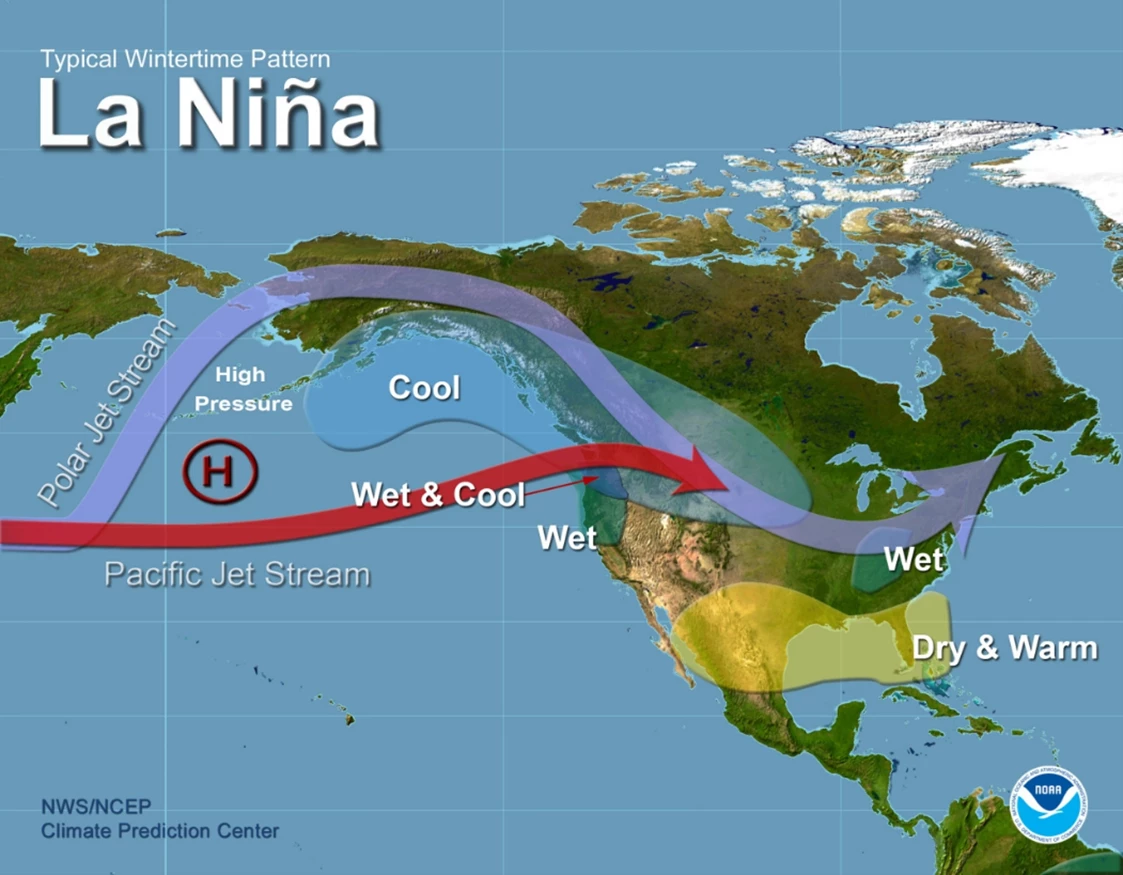
Courtesy NWS/NCEP Climate Prediction Center.
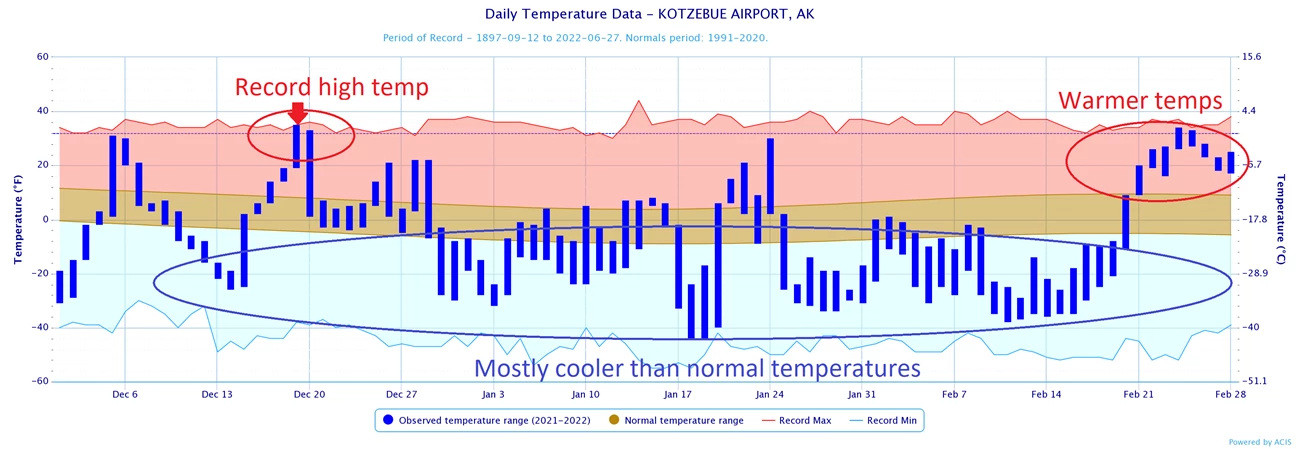

The spring season was warm and dry
The average temperatures for March and April were warmer than normal in Kotzebue. March was 4.5 degrees F warmer, and April was almost 2 degrees warmer than normal. May temperatures were steady but did not show the typical warming that generally starts at the end of the month with the ever increasing amount of spring sunlight (Fig. 5). The May average temperature ended up 2 degrees colder than normal. The spring season temperature ended up 1.4°F warmer than the 1991-2020 normal. Since 2014 the average spring season temperatures have been in the normal to above normal range. The same holds true at Mt. Noak and Asik climate stations where the average spring temperature over the past nine years has been ~ 4°F warmer than when we started taking measurements in 2012 and 2013.The spring is generally the driest season for the region and this spring was no exception. The spring season total was 1.10 inches, most of that fell during the first part of May. Normal spring precipitation is 1.52 inches.
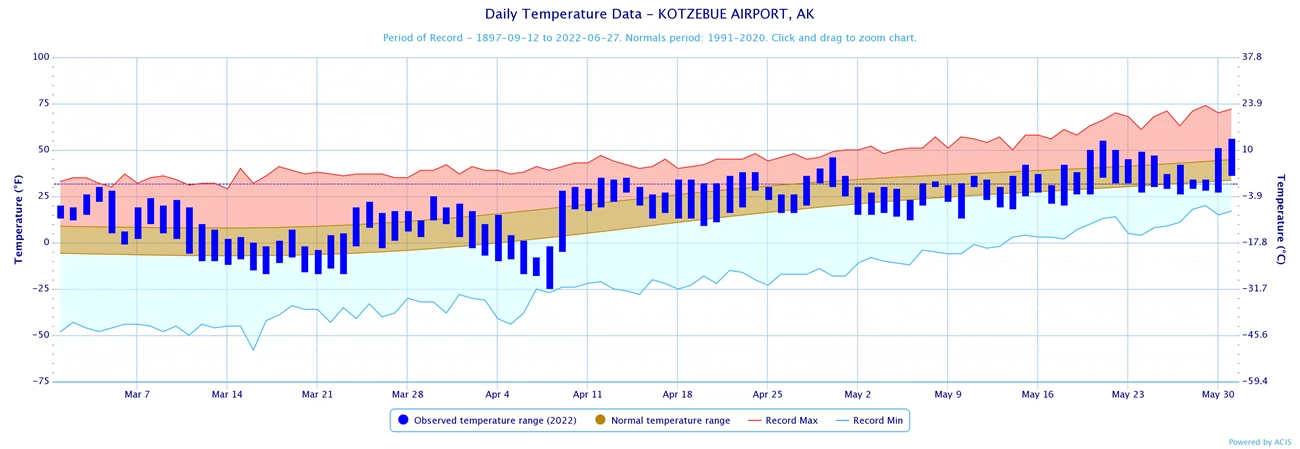

Summer 2022 (through August 18)
So far it has been a cool summer in Kotzebue. The average monthly temperature for June was 1.8°F cooler than normal in Kotzebue. June 4-7 was the coolest period of the month with temperatures averaging ~8 degrees F below normal. We observed remnant sea ice glistening in the summer sun on June 9 in Kotzebue, a rare treat since we usually do our field work later in the summer (Fig. 7). July was much cooler than normal with a monthly average temperature of 51.9°F, which is 3.4°F cooler than normal and the coolest July since 2010. At the Imelyak climate station in eastern Noatak National Preserve (elevation 3620’) the average temperature for July was a cool 44.4°F, with several daily low temperatures below freezing.
The rainfall total for June in Kotzebue was below normal at 0.49 inches; the 30-year average (normal) is 0.60 inches. July was a bit wetter with a total of 1.94 inches of rain, 0.34 inches above normal. The wettest was July 27 with a daily total of 0.50 inches. We’ll update the full summer statistics in the fall.
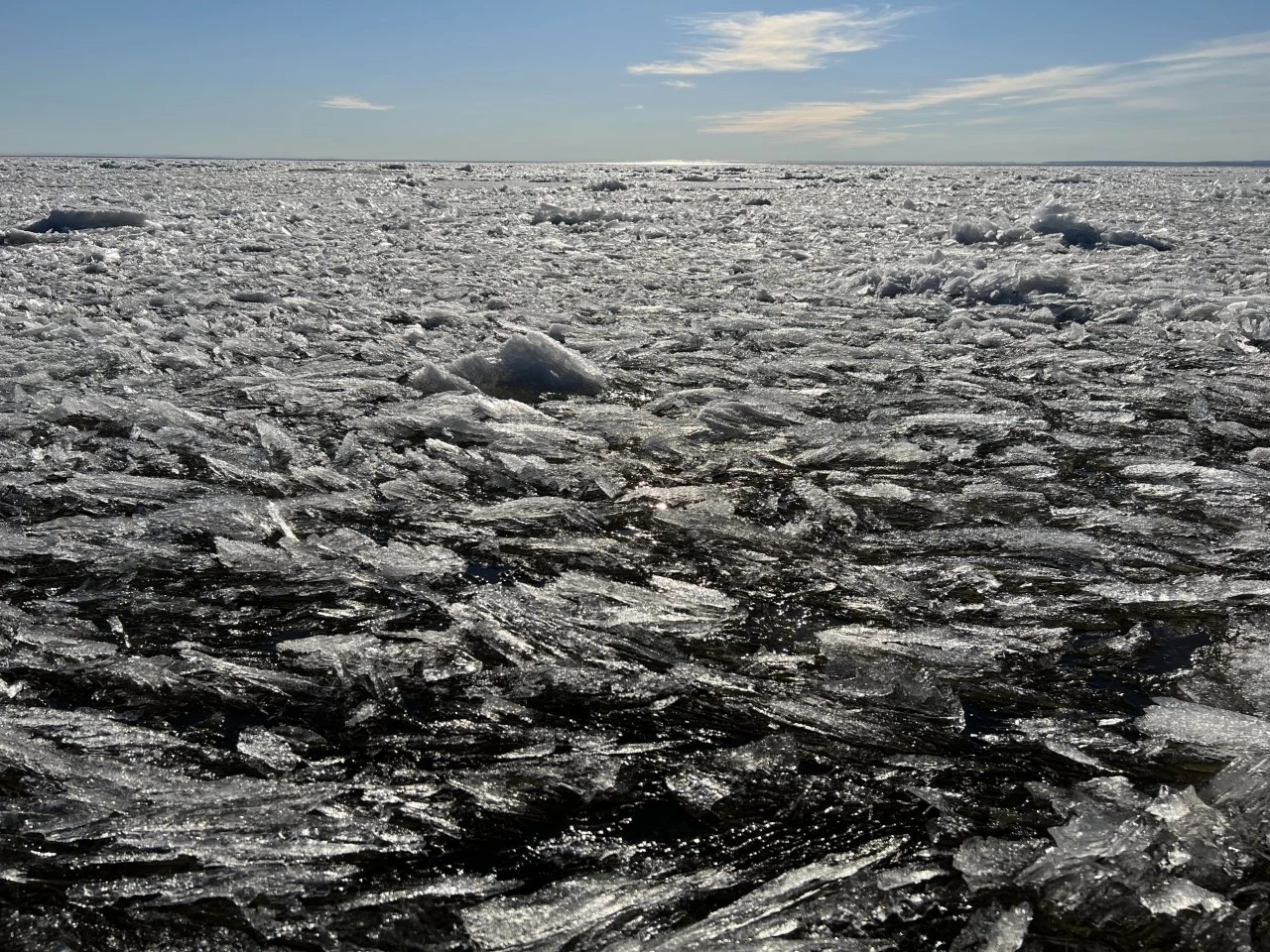
For more info, contact:
Pam Sousanes, Physical Scientist907-455-0677
pam_sousanes@nps.gov
Ken Hill, Physical Scientist
907-455-0678
kenneth_hill@nps.gov
